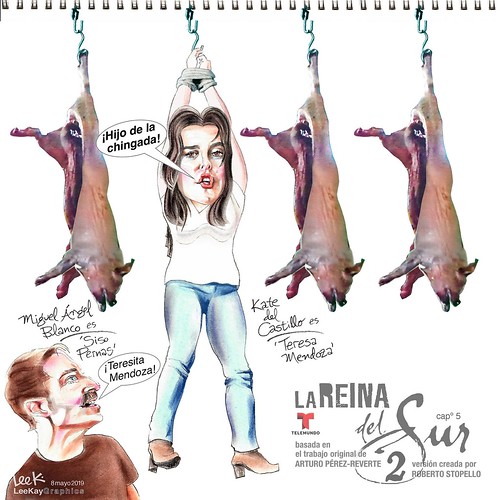Ient, Relative, Employer, Provider and other. We extended identifier kinds each in terms of scope and granularity. Our annotation label set is based very first and foremost on the PII elements defined by the HIPAA Privacy Rule. Nonetheless, being aware of other annotation efforts, we tried to style a broad spectrum of annotation labels so that we are able to establish a widespread ground for our community. Standardization of annotation schemas is a essential objective that we all must strive for; otherwise, an efficient evaluation and comparison of our study outcomes would be too difficult. We think this can be the initial step towards that ambitious aim. The ideas and annotation strategies defined and described within this paper might be ideal understood if studied together with numerous good examples. We are presently functioning on finalizing our annotation recommendations containing a wealthy set of examples the majority of that are  extracted from actual reports. The suggestions will probably be publicly obtainable by the time of this publication at http:scrubber.nlm.nih.gov. Acknowledgements We’re grateful to Brett South, Guy Divita and their colleagues for sharing with us the annotation suggestions PubMed ID:http://www.ncbi.nlm.nih.gov/pubmed/21307382 made use of in their study at the University of Utah along with the VA Salt Lake City Overall health Care Program. Funding This perform was supported by the Intramural Research Program of your National Institutes of Wellness, National Library of Medicine. Competing Interests The very first author receives royalties from University of Pittsburgh for his contribution to a de-identification project. and authorized his appointment.References 1. Hanna J. Some Supreme Court Rule 138 privacy provisions delayed until 2015. Illinois Bar Journal 2015;102(two):62. 2. U.S. Courts District of Idaho. Transcript Redaction Policy Procedures, 2014. URL: http:www.id.uscourts.gov districtattorneysTranscriptCourt_Reporter.cfm. Accessed on 362015. 3. U.S. District Court Southern District of California. Electronic Availibility of Transcripts — Redaction Procedure, 2008. URL: https:www.casd.uscourts.govAttorneysSitePagesTranscripts.aspx. Accessed on 362015.four. Office of Civil Rights. Guidance Regarding Strategies for De-idnetification of Protected Well being Data in Accordance with Well being Insurance coverage Portability and Accountability Act (HIPAA) Privacy Rule. In: Services USDoHaH, editor, 2012. 5. Kayaalp M, Browne AC, Callaghan FM, Dodd ZA, Divita G, Ozturk S, et al. The Pattern of Name Tokens in Narrative Clinical Text and also a Comparison of 5 NSC305787 (hydrochloride) chemical information Systems for Redacting them. J Am Med Inform Assn 2013. 6. Kayaalp M, Browne AC, Dodd ZA, Sagan P, McDonald CJ. De-identification of Address, Date, and Alphanumeric Identifiers in Narrative Clinical Reports. Proceedings with the Annual American Healthcare Informatics Association Fall Symposium 2014. 7. Browne AC, Kayaalp M, Dodd ZA, Sagan P, McDonald CJ. The Challenges of Producing a Gold Common for Deidentification Investigation. Proceedings on the Annual American Healthcare Informatics Association Fall Symposium 2014. 8. South BR, Mowery D, Suo Y, Leng JW, Ferrandez O, Meystre SM, et al. Evaluating the effects of machine preannotation and an interactive annotation interface on manual de-identification of clinical text. J Biomed Inform 2014;50:162-72. 9. Meystre S, Friedlin F, South B, Shen S, Samore M. Automatic de-identification of textual documents in the electronic wellness record: a review of recent analysis. BMC Medical Analysis Methodology 2010;10(1):70. 10. Uzuner Luo Y, Szolovits P. Evaluating the State-of-the-Art.
extracted from actual reports. The suggestions will probably be publicly obtainable by the time of this publication at http:scrubber.nlm.nih.gov. Acknowledgements We’re grateful to Brett South, Guy Divita and their colleagues for sharing with us the annotation suggestions PubMed ID:http://www.ncbi.nlm.nih.gov/pubmed/21307382 made use of in their study at the University of Utah along with the VA Salt Lake City Overall health Care Program. Funding This perform was supported by the Intramural Research Program of your National Institutes of Wellness, National Library of Medicine. Competing Interests The very first author receives royalties from University of Pittsburgh for his contribution to a de-identification project. and authorized his appointment.References 1. Hanna J. Some Supreme Court Rule 138 privacy provisions delayed until 2015. Illinois Bar Journal 2015;102(two):62. 2. U.S. Courts District of Idaho. Transcript Redaction Policy Procedures, 2014. URL: http:www.id.uscourts.gov districtattorneysTranscriptCourt_Reporter.cfm. Accessed on 362015. 3. U.S. District Court Southern District of California. Electronic Availibility of Transcripts — Redaction Procedure, 2008. URL: https:www.casd.uscourts.govAttorneysSitePagesTranscripts.aspx. Accessed on 362015.four. Office of Civil Rights. Guidance Regarding Strategies for De-idnetification of Protected Well being Data in Accordance with Well being Insurance coverage Portability and Accountability Act (HIPAA) Privacy Rule. In: Services USDoHaH, editor, 2012. 5. Kayaalp M, Browne AC, Callaghan FM, Dodd ZA, Divita G, Ozturk S, et al. The Pattern of Name Tokens in Narrative Clinical Text and also a Comparison of 5 NSC305787 (hydrochloride) chemical information Systems for Redacting them. J Am Med Inform Assn 2013. 6. Kayaalp M, Browne AC, Dodd ZA, Sagan P, McDonald CJ. De-identification of Address, Date, and Alphanumeric Identifiers in Narrative Clinical Reports. Proceedings with the Annual American Healthcare Informatics Association Fall Symposium 2014. 7. Browne AC, Kayaalp M, Dodd ZA, Sagan P, McDonald CJ. The Challenges of Producing a Gold Common for Deidentification Investigation. Proceedings on the Annual American Healthcare Informatics Association Fall Symposium 2014. 8. South BR, Mowery D, Suo Y, Leng JW, Ferrandez O, Meystre SM, et al. Evaluating the effects of machine preannotation and an interactive annotation interface on manual de-identification of clinical text. J Biomed Inform 2014;50:162-72. 9. Meystre S, Friedlin F, South B, Shen S, Samore M. Automatic de-identification of textual documents in the electronic wellness record: a review of recent analysis. BMC Medical Analysis Methodology 2010;10(1):70. 10. Uzuner Luo Y, Szolovits P. Evaluating the State-of-the-Art.